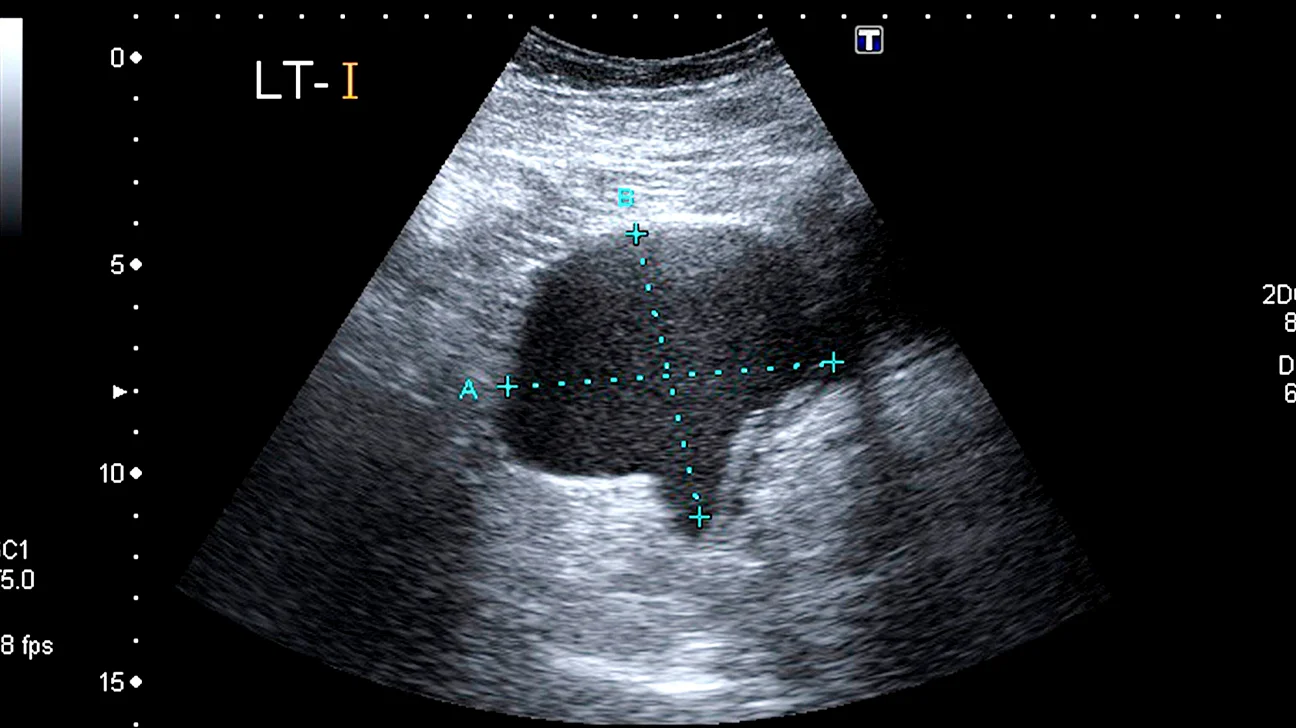
When you go for an ultrasound, you may see some abbreviations and technical terms that you are not familiar with. One of these abbreviations is “AC” that appears on the ultrasound report. Many people wonder what AC means on an ultrasound and what it indicates. Understanding the meaning of AC is important because it provides crucial information about the fetal growth and development.
In this article, we will explain what AC means on an ultrasound and what its significance is.
What Does AC Mean On An Ultrasound?
Ultrasound imaging is a critical tool for monitoring fetal growth and development during pregnancy. One of the measurements taken during an ultrasound is the abdominal circumference (AC), which is an important indicator of fetal growth and overall health.
The AC measurement is taken by placing the ultrasound probe on the mother’s abdomen and measuring the widest part of the fetal abdomen. This measurement is then used to estimate the size and weight of the fetus.
AC measurements are important because they provide valuable information about fetal growth and development. In particular, they can help identify if the fetus is growing too slowly or too quickly, which can be an indication of potential health problems.
An abnormal AC measurement may suggest that the fetus is experiencing growth restriction or macrosomia, which is when the baby is larger than average. Growth restriction can be caused by a variety of factors, such as poor maternal nutrition, placental insufficiency, or genetic abnormalities. Macrosomia can increase the risk of complications during delivery, such as shoulder dystocia or a difficult vaginal delivery.
In addition to assessing fetal growth, AC measurements can also help guide management of high-risk pregnancies. For example, if the AC measurement is abnormally low, the healthcare provider may recommend additional testing or monitoring to ensure the fetus is growing appropriately.
It is important to note that AC measurements are just one aspect of a comprehensive ultrasound examination. Other measurements, such as head circumference and femur length, are also taken to provide a complete assessment of fetal growth and development.
How AC Is Measured?
Abdominal circumference (AC) is measured during pregnancy to monitor fetal growth and development. AC measurement is a routine part of prenatal care, and it is usually performed during the second trimester ultrasound exam.
To measure the AC, the healthcare provider uses a measuring tape or a caliper to wrap around the largest part of the fetus’s abdomen, usually at the level of the umbilicus. The measurement is taken with the fetus lying still in a supine position, and the tape or caliper is held firmly but not too tightly around the abdomen. The measurement is taken in centimeters and recorded in the medical record.
Alternatively, AC measurement can also be estimated using ultrasound imaging. During an ultrasound exam, the healthcare provider can visualize the fetus’s abdominal circumference and take measurements from the images on the screen. This method is particularly useful for fetuses that are difficult to measure due to their position or size.
It’s important to note that AC measurement is just one aspect of fetal growth monitoring. Other measurements, such as fetal weight, head circumference, and femur length, are also taken into account to assess overall fetal growth and well-being. If any concerns arise during prenatal care, additional testing or medical intervention may be necessary to ensure a healthy pregnancy and delivery.
Why AC Is Important In Ultrasound Imaging?
Abdominal circumference (AC) is an important measurement taken during ultrasound imaging of a fetus. AC measurements are important for several reasons:
- Estimating Fetal Weight: AC measurements are used to estimate fetal weight, which is important in determining fetal growth and development. This information is especially critical in high-risk pregnancies where fetal growth may be a concern.
- Assessing Fetal Growth: AC measurements are important for assessing fetal growth and development. A fetus that is growing too slowly or too quickly may indicate potential health problems, such as poor maternal nutrition, placental insufficiency, or genetic abnormalities.
- Detecting Abnormalities: AC measurements can help detect abnormalities in fetal growth and development. For example, a fetus with an abnormally large AC may indicate the presence of gestational diabetes or a genetic disorder such as Beckwith-Wiedemann syndrome. Similarly, a small AC may indicate fetal growth restriction, which can be a sign of placental insufficiency.
- Monitoring High-Risk Pregnancies: AC measurements are especially important in high-risk pregnancies, where fetal growth may be a concern. In these cases, AC measurements can help healthcare providers monitor fetal growth and development and make decisions about delivery timing or other interventions.
In summary, AC measurements are an important aspect of ultrasound imaging for monitoring fetal growth and development. They provide valuable information about fetal weight and growth, can help detect abnormalities, and are especially important in high-risk pregnancies. If you have questions or concerns about AC measurements or any other aspect of ultrasound imaging, it is important to speak with your healthcare provider.
AC Measurement And Fetal Growth
AC measurement, also known as abdominal circumference measurement, is a standard prenatal measurement used to monitor fetal growth and development. During pregnancy, the size of the fetus’s abdomen can be an indicator of overall fetal growth and well-being.
To measure the AC, the healthcare provider uses a measuring tape to wrap around the largest part of the fetus’s abdomen, usually at the level of the umbilicus. The measurement is then recorded in centimeters and compared to standard growth charts for the gestational age of the fetus.
Fetal growth is a critical component of a healthy pregnancy, and regular AC measurements are used to monitor fetal growth and identify any potential issues. In general, fetal growth follows a predictable pattern, and any deviation from this pattern may indicate a problem with the pregnancy.
If the AC measurement is smaller than expected for the gestational age of the fetus, it may indicate intrauterine growth restriction (IUGR), a condition in which the fetus is not growing at a normal rate. This can be caused by various factors, including poor nutrition, placental insufficiency, or genetic abnormalities.
Conversely, if the AC measurement is larger than expected for the gestational age of the fetus, it may indicate macrosomia, a condition in which the fetus is growing too large. Macrosomia can increase the risk of complications during delivery, including shoulder dystocia and cesarean delivery.
Overall, AC measurement is an important tool for monitoring fetal growth and ensuring a healthy pregnancy. It is typically performed during routine prenatal appointments, and any concerns or abnormalities can be addressed with further testing or medical intervention.
Interpreting AC Measurements
Interpreting abdominal circumference (AC) measurements during an ultrasound examination requires consideration of several factors. Here are some important things to keep in mind when interpreting AC measurements:
- Gestational Age: AC measurements should be interpreted in the context of gestational age. As pregnancy progresses, fetal growth accelerates, and the size of the fetus increases. Therefore, an AC measurement that is appropriate for one gestational age may be too small or too large for another.
- Variability: AC measurements can be variable and affected by several factors such as fetal position, maternal body habitus, and the skill of the sonographer. Therefore, it is important to consider AC measurements in conjunction with other fetal measurements such as head circumference, femur length, and estimated fetal weight.
- Comparison with Standardized Growth Charts: AC measurements should be compared with standardized growth charts that plot fetal measurements against gestational age. This helps to determine if the fetus is growing appropriately for its gestational age. If the AC measurement falls below or above the expected range, further evaluation may be necessary.
- Follow-up: If an abnormal AC measurement is identified, additional follow-up may be required. This may include repeat ultrasound examinations, fetal monitoring, or referral to a specialist for further evaluation.
- Other Ultrasound Measurements: It is important to consider other ultrasound measurements in addition to AC when assessing fetal growth and development. For example, head circumference and femur length are also important indicators of fetal growth, and abnormalities in these measurements may indicate potential health problems.
In summary, interpreting AC measurements during an ultrasound examination requires consideration of several factors, including gestational age, variability, comparison with standardized growth charts, follow-up, and consideration of other ultrasound measurements. Healthcare providers can provide personalized guidance and interpretation based on individual patient circumstances.
Clinical Applications Of AC Measurements
Abdominal circumference (AC) measurements are a key tool in monitoring fetal growth and well-being during pregnancy. Here are some of the clinical applications of AC measurements:
- Diagnosis of intrauterine growth restriction (IUGR): AC measurements are used to identify fetuses that are not growing at a normal rate for their gestational age. IUGR can be caused by various factors, including poor nutrition, placental insufficiency, or genetic abnormalities.
- Diagnosis of macrosomia: AC measurements are also used to identify fetuses that are growing too large for their gestational age, a condition known as macrosomia. Macrosomia can increase the risk of complications during delivery, including shoulder dystocia and cesarean delivery.
- Assessment of fetal well-being: AC measurements are an important indicator of fetal health and well-being. Changes in the AC measurement over time can help healthcare providers identify potential issues with fetal growth and development.
- Prediction of preterm birth: AC measurements can be used to predict the likelihood of preterm birth. Research has shown that a small AC measurement at 20-24 weeks of gestation is associated with an increased risk of preterm birth.
- Monitoring the effectiveness of interventions: AC measurements can be used to monitor the effectiveness of interventions aimed at improving fetal growth and well-being, such as changes in maternal diet, increased fetal surveillance, or early delivery.
Overall, AC measurements are an essential component of prenatal care, and they are used to monitor fetal growth and well-being, identify potential issues, and make informed decisions about pregnancy management.
Limitations Of AC Measurements
Although abdominal circumference (AC) measurements are an important aspect of fetal growth assessment during ultrasound examinations, they do have some limitations that should be considered:
- Inaccuracies: AC measurements can be affected by fetal position, maternal body habitus, and the skill of the sonographer. As a result, AC measurements may be subject to inaccuracies that can affect the accuracy of fetal growth assessment.
- Limited Information: AC measurements provide information about fetal size and weight, but they do not provide information about other important aspects of fetal health, such as organ function, brain development, or genetic abnormalities.
- Difficulty in Late Pregnancy: In late pregnancy, it can be challenging to obtain accurate AC measurements due to fetal position, decreased amniotic fluid, and the size of the fetus. In these cases, other measurements such as fetal weight may be more useful for assessing fetal growth.
- Lack of Consistency: There is some variation in how AC measurements are obtained, which can affect their reliability. This is particularly true in cases where there are multiple sonographers involved in the assessment of fetal growth.
- Not Always a Predictor of Outcomes: Although AC measurements are used to assess fetal growth, they are not always a reliable predictor of outcomes such as neonatal morbidity or mortality.
In summary, although AC measurements are an important aspect of fetal growth assessment during ultrasound examinations, they have some limitations. AC measurements may be subject to inaccuracies, provide limited information about fetal health, and may be difficult to obtain in late pregnancy. It is important to consider these limitations when interpreting AC measurements and to use other measures in conjunction with AC to assess fetal growth and development.
Conclusion
In conclusion, AC on an ultrasound stands for “Abdominal Circumference” and is one of the important measurements taken during a prenatal ultrasound examination. The measurement of the AC is used to estimate the fetal weight, growth, and size, and can provide crucial information about the health of the developing fetus.
It is essential to have regular prenatal checkups and ultrasounds to monitor the growth and development of the fetus and to detect any potential issues that may arise.
If you have any concerns or questions about your pregnancy or ultrasound results, it is important to discuss them with your healthcare provider.



